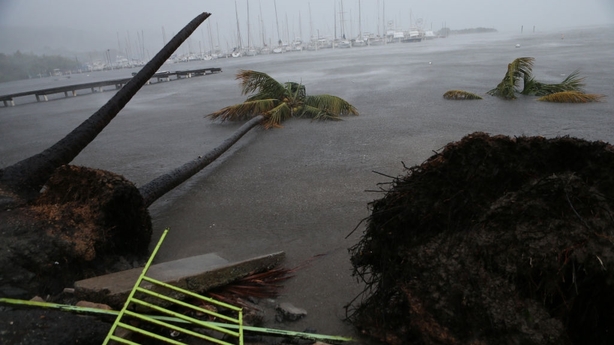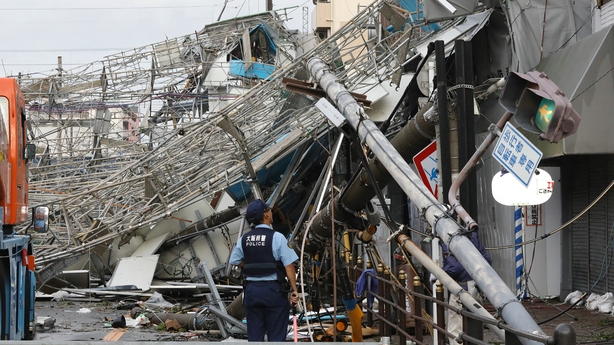Humanity should brace itself for serious blowback over the next few centuries from oceans and Earth's frozen zones, according to the draft of a major United Nations report obtained by the AFP news agency.
The longtime habit of loading the atmosphere with planet-warming CO2 has spawned a host of consequences, starting with irreversible sea-level rise, according to the special report from the Intergovernmental Panel on Climate Change (IPCC).
Even under optimistic scenarios in which warming is capped at two degrees Celsius, Earth will likely see more than a 100-fold increase in the damages caused by superstorms and 280 million people displaced by rising seas, the report found.
The planet's ice or snow-covered regions, known as the cryosphere, have also been hit by man-made warming, with ice sheets shedding more than 400 billion tonnes in mass each year, and mountain glaciers - the fresh water source for a billion people in the Andes, Himalayas and elsewhere - threatened with local extinction.
One third to 99% of the world's permafrost could also melt by 2100 if emissions continue unabated, potentially releasing a carbon bomb of greenhouse gases, according to the findings.
The 900-page scientific assessment is the fourth such tome from the UN in less than a year, with others focused on a 1.5C (2.6F) cap on global warming, the state of biodiversity, and how to manage forests and the global food system.
All four conclude that humanity must overhaul the way it produces and consumes almost everything to avoid the worst ravages of climate change and environmental degradation.
Governments meet in Monaco next month to vet the new report's official summary.
While the underlying science - drawn from thousands of peer-reviewed studies - cannot be modified, diplomats with scientists at their elbow will tussle over how to frame the findings, and what to leave in or out.
The final advice to policymakers will be released on 25 September, too late to be considered by world leaders gathering two days earlier for a summit convened by UN Secretary-General Antonio Guterres to extract stronger national commitments in confronting the climate crisis.
Mr Guterres may be disappointed by what the world's major greenhouse gas emitters put on the table, according to experts tracking climate politics in China, the United States, the European Union and India.
The Big Four - accounting for nearly 60% of global fossil fuel-based emissions - all face devastating ocean- and ice-related impacts, but none seem prepared just announce more ambitious goals for purging carbon from their economies.

US President Donald Trump - a no-show at the G7 climate segment this week - wants the US to exit the Paris Agreement and has rowed back on predecessor Barack Obama's climate policies.
India is rapidly developing solar power, but continues to build up coal-fired capacity at the same time.
The European Union is inching toward a mid-century "net zero" emissions goal, but several member states are dragging their feet.
Long seen as a leader on climate, China - which emits nearly as much CO2 as the US, EU and India combined - is also sending mixed signals.
"The eyes of Beijing are gradually moving away from environmental issues, and climate change in particular," noted Greenpeace International analyst Li Shuo, a longtime observer of China's climate policy.
A resurgence of domestic coal-fired power and a relaxing of air pollution regulations, he said, point to a preoccupation with China's slowing economy and its trade war with the US.
And yet, all of these nations face many of the threats outlined in the IPCC report.

Shanghai, Ningbo, Taizhou and another half-dozen major coastal cities in China, for example, are highly vulnerable to future sea level rise, which is projected to add a metre compared to the late 20th century global watermark, if CO2 emissions continue unabated. Mumbai and other coast India cities are in harm's way as well.
Even in the United States, where billions are being spent to protect New York, Miami and other exposed cities, such efforts could easily be overwhelmed, say experts.
"There is a pervasive thread in the US right now promoted by techno-optimists who think we can engineer our way out of this problem," said Michael Mann, director of the Earth System Science Center at Pennsylvania State University.
"But the US is not ready for a metre of sea level rise by 2100," he told AFP.
"Just look at what happened in the wake of superstorm Sandy, Katrina, in Houston, or Puerto Rico."


